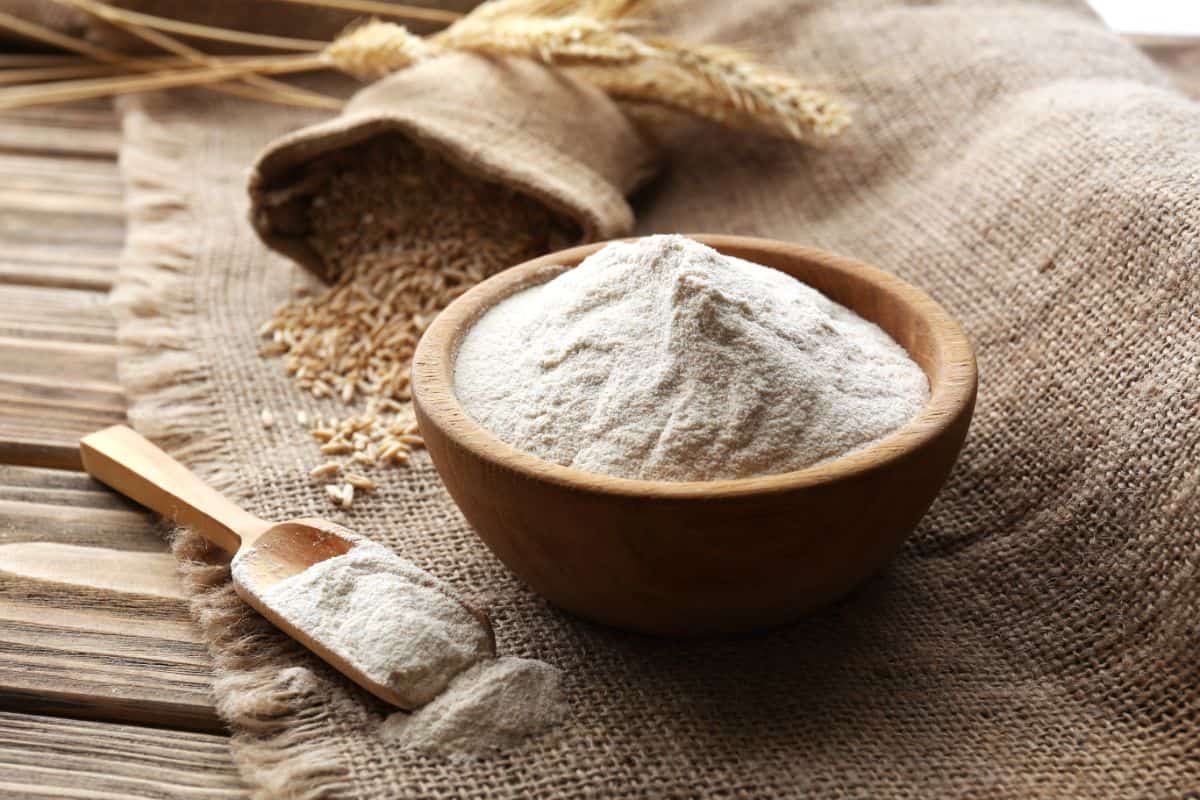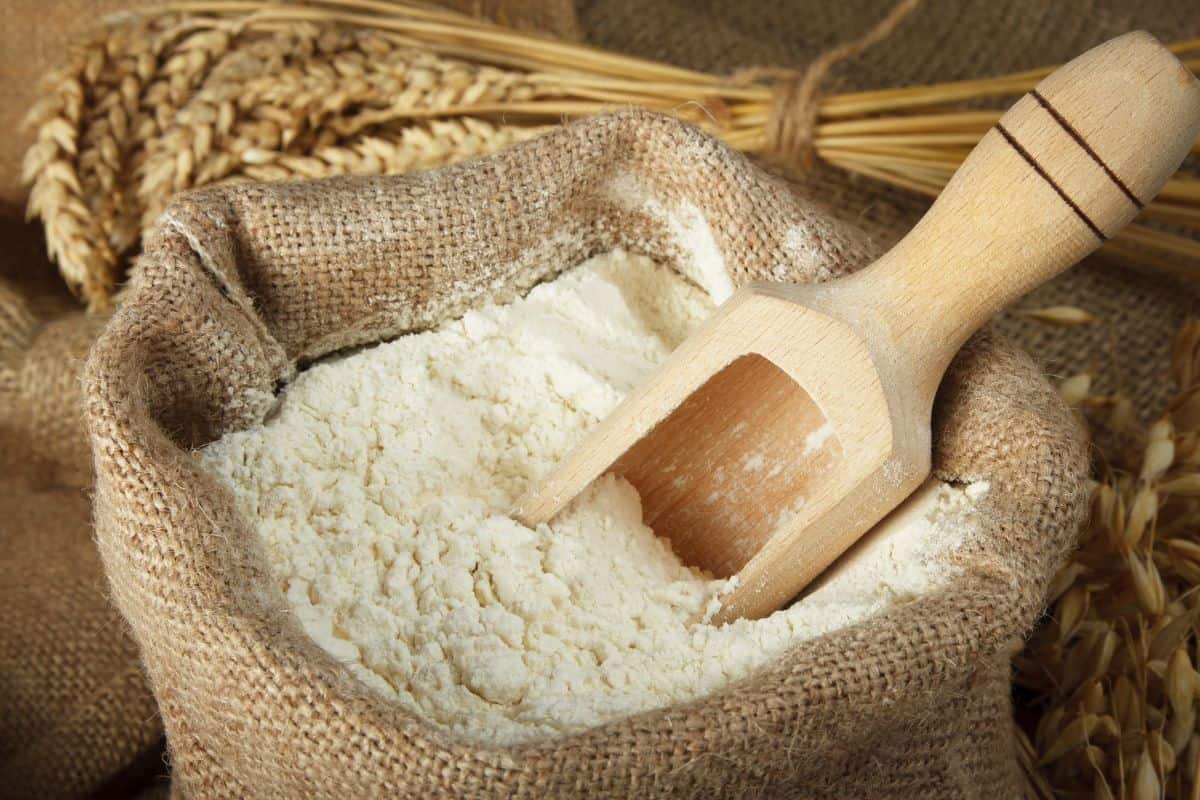Are you sick of whole wheat flour’s harsh flavor and nutritional deficiency? Then take over and begin grinding your own flour at home using a manual or electric grain mill.
When you grind your own flour, you receive a healthy whole wheat flour that hasn’t been stripped of any nutrients. Because the flour preserves the whole endosperm, which means the bran and germ have not been sifted away like white flour, it has more nutrients.
Additionally, you’ll know precisely what you’re receiving when you see the grains move into the hopper and come out as powdered flour since you know what you placed in it. You can be certain that the flour you’re using in your baking and feeding your family is nutritious and free of fillers and chemicals.
Flour milling may appear complicated, but it is not, and it is addicting because once you start using handmade flour, you will never go back to store-bought ones.

How to mill your own flour
There are a few possibilities if you wish to mill your own flour at home. A burr coffee grinder, a food processor, or grain milling equipment can all be used. A home flour milling machine, unsurprisingly, will offer you the greatest results and provide you with the most control. You’ll be able to achieve the flour texture you want, from coarse to ultra-fine fine. This way, you allow rapid, efficient milling and the capacity to mill greater volumes at once, with the correct milling equipment.
Can you mill flour with a coffee grinder?
Absolutely! It’s quite simple to mill some wheat berries with a coffee grinder, and it’s a terrific way to test the waters particularly if you already own a coffee grinder. Simply fill your coffee grinder halfway with water. For around 30 seconds, grind. Check the flour you’ve prepared; if it needs to be finer, grind for another 30 seconds, and so on, until you’re satisfied with the texture. If any uneven parts remain, simply sift them out and re-grind them.
Be warned that, while a coffee grinder will finely crush the wheat berries, you will acquire… An uneven flour grind, with some larger and smaller pieces. It won’t crush down to a fine powder. At a time, it will only grind a little amount of wheat. Using a coffee grinder to try out wheat grinding is an excellent method to do it, but it’s not ideal for regular usage for the reasons I’ve outlined.
It’s an excellent alternative if you want to try the flavor of freshly milled flour in your bread but don’t want to spend the money on a home flour mill.
Can you mill flour using a food processor?
I wouldn’t advocate using a food processor to grind flour for lengthy periods since it can harm or wear out your food processor.
However, I am aware that many have successfully ground wheat into flour using their food processor/blender for years. So it’s entirely up to you whether or not you want to give it a shot! Depending on the quality of your equipment, you’ll probably obtain comparable results to the coffee grinder.
Why should you mill your own flour?

When it comes to preparing nutritious and delectable homemade bread, excellent flour is essential. It’s a one-of-a-kind and fulfilling experience to grind your own flour. We mill our own flour at home for key reasons. 80-90 percent of the essential nutrients are removed during flour preparation and contemporary milling.
When you grind whole grains at home, however, you’re also incorporating the bran and germ into the flour, as well as ensuring that it’s free of bleaching agents and additives.
Within the first 24 hours of being milled and sitting on the shelf, the flour loses its nutritional value. As a result, homemade flour is healthier than store-bought flour. Additionally, specialty grains are exorbitantly priced as you walk down the flour aisles. Buying specialty grains in bulk and making your own flours is considerably more cost-effective than paying the more than double the marked-up price.
Freshly milled flour also does not rapidly get rancid. You can make super-fine flour or coarse flour at temperatures that keep nutrients intact, ensuring that you always have the right flour on hand. What you’ll appreciate the most is how much lighter and fluffier the flour is.
What grains can be ground into flour?
Your home grain mill can grind a wide range of grains, beans, seeds, and nuts into flour. Wheat, rye, corn, rice, barley, oats, buckwheat, millet, Kamut, quinoa, peas, mung beans, garbanzos, and lentils are examples of these grains.
The hulled entire kernels of wheat are known as raw wheat berries. These may be used to produce home-milled flours, or they can be cooked or sprouted to make bread. Grains come in a variety of colors, including white, russet, purple, and amber. Whole grains including Spelt, Kamut, Emmer, and Einkorn are also available.
Popcorn may even be ground and used in bread. It has an intriguing texture and flavor to it. Keep in mind that the quality of the grains you use will impact the quality of the flour you produce. As a result, start with a decent grain, ideally one that is organic.
What should you know when buying a grain mill?
Choose a bread mill based on how you want to use it. Purchase a manual grinder if you want a more hands-on experience. An electric bread mill is a great alternative if you want the grinder to do the job for you. Look for one that is simple to disassemble and clean.
Choose the grains or beans you’d want to grind into flour. The traditional kinds of wheat for yeast bread are hard red winter wheat and hard red spring wheat. However, you might wish to try some of the newly trendy ancient grains, which are considered to be more nutritious and simpler to digest. Modern wheat is substantially less healthy than spelt, emmer, and einkorn grains.
You may use these grains in place of whole wheat flour in bread recipes, but you’ll need to change the hydration and mixing times, as well as the amount of yeast used, depending on the recipe.
As a tip, only grind as much flour as you want to use since freshly ground whole grains soon get rancid. Whole grain kernels may be stored indefinitely at room temperature.
How do you store grains?
The shelf life of grains is unquestionably longer than that of flours. The dry pantry shelf life of intact grains can be up to 6 months if stored in sealed containers and kept cold. Make sure they’re out of the path of air, moisture, and light.
Of course, if you have the room, freezing the entire grains is an excellent idea since it helps destroy any bugs or eggs that may have been there. After that, you can put them in storage bags.
How do you store flour and how long will it last?
To get the most nutrients out of the home-milled flour, use it within 24 hours. You only need to crush as much flour as you require. You may keep it at room temperature for up to 3 days or refrigerate it for up to 7 days if you need to prepare a bigger quantity.
You may freeze it for up to 6 months after that. Although sprouted grains last longer, it’s best to store them according to the same guidelines as regular grains.
